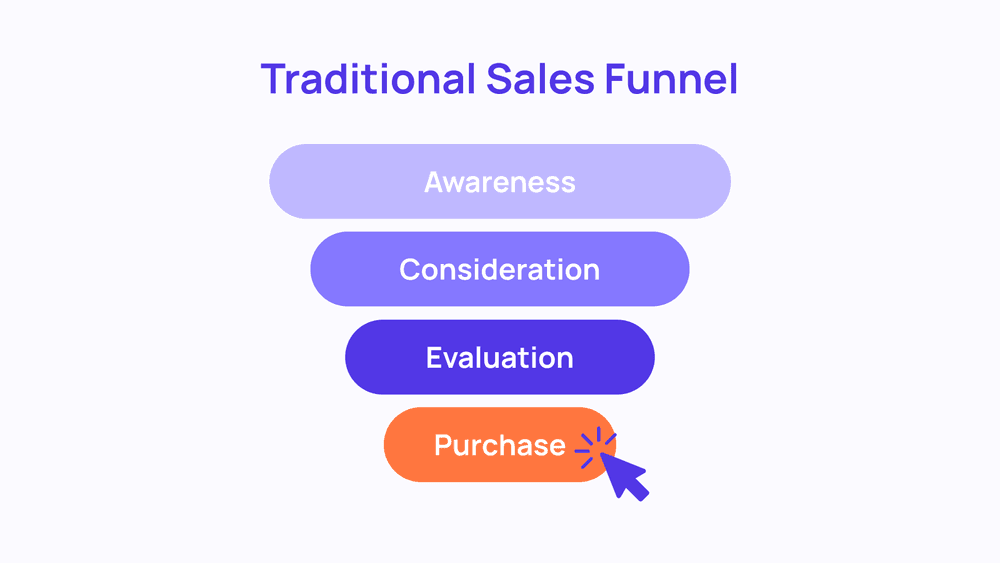There was a time when marketing felt like a well-organized process. You built a funnel, and people moved through it. First came awareness, then interest, then a decision. Every stage had its own tactics: ads, webinars, email nurtures. And if you aligned your efforts correctly, buyers followed along.
At its core, the funnel was just a way to describe how someone goes from “I’ve never heard of you” to “I’m ready to buy.” It was simple, logical, and easy to measure. Each step could be tracked, optimized, and improved.
It gave us a sense of control. The idea was clear: deliver the right message at the right time, and you could move someone forward, one step at a time.
But the truth is that this version of the buyer journey hasn’t existed for a long time.
B2B buying has changed. Have we?
Today, B2B buyers don’t move through clean, linear stages.
They behave more like a network of independent researchers, gathering information from dozens of sources, switching channels, and involving multiple people across their organization. All of this happens well before they ever reach out to your sales team.
They might read a user review on G2, browse a competitor’s blog, jump into a LinkedIn thread, and then disappear for a week. Later, they might return to your site, read a case study, and still not be ready to engage. Meanwhile, someone else on their team starts their own research from a completely different angle.
They circle back. They skip steps. They form opinions long before they land on your radar.
They’re not waiting to be guided by your email sequence; they’re guiding themselves. And while you’re optimizing for funnel stages, they’re making decisions in Slack threads and internal meetings you’ll never see.
The traditional funnel hasn’t failed because it was wrong. It just stopped reflecting reality.
If you want to meet modern buyers where they are, you have to let go of the illusion of a linear journey and start designing for how decisions actually happen.
To keep up with this kind of behaviour, marketing teams are increasingly looking at headless CMS trends and adopting a future-proof CMS that can adapt to this fragmented journey.










